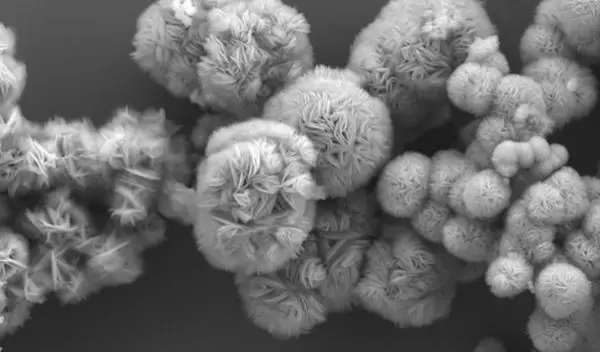
Scientists discover easy way to make materials with atomically thin metal layers
The secret to a perfect croissant is in the layers — as many as possible, each one interspersed with butter. Similarly, a material with promise for new applications is made of many thin layers of metal, between which scientists can slip different ions for various purposes. This makes them potentially very useful for future high-tech electronics or energy storage.
Until recently, these materials — known as MXenes, pronounced "max-eens" — were as labor-intensive as good croissants.
MXenes were discovered in 2011. Now, a breakthrough by scientists at the University of Chicago shows how to make MXenes far more quickly and easily, with fewer toxic byproducts. The research is published in Science. The U.S. National Science Foundation provided funding support through several grants.
Usually, when a metal like gold or titanium is shaved to create atomic-thin sheets, it stops behaving like a metal. But unusually strong chemical bonds in MXenes allow them to retain the abilities of metal, such as conducting electricity strongly.
They're also easily customizable. "You can put ions between the layers to use them to store energy, for example," said chemist Di Wang, co-first author of the paper along with Chenkun Zhou.
These advantages could make MXenes useful for building new devices to, for example, store electricity or block electromagnetic wave interference. Previously, the only way to make MXenes involved intensive synthesis steps, including heating the mixture as high as 3,000 degrees Fahrenheit and bathing it in hydrofluoric acid, one of the most dangerous chemicals in manufacturing.
"This is fine if you're making a few grams for experiments in the laboratory, but if you wanted to make large amounts to use in commercial products, it would become a major corrosive waste disposal issue," said Dmitri Talapin, corresponding author on the paper.
To design a more efficient and less toxic method, the team used the principles of chemistry, in particular "atom economy," which seeks to minimize the number of wasted atoms during a reaction. The easier, less toxic method opens new avenues for scientists to create and explore new varieties of MXenes.
The researchers hope their discovery will spur innovation and pave the way to using MXenes in everyday electronics and devices.
NSF provided funding support through grants 2004880, 1831406, 2011854, 0959470, 1626065 and 1848306.


